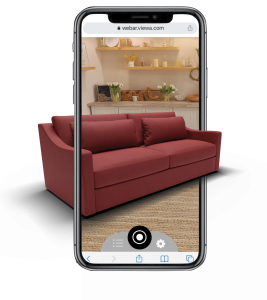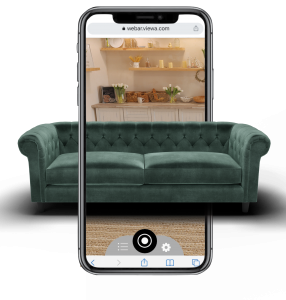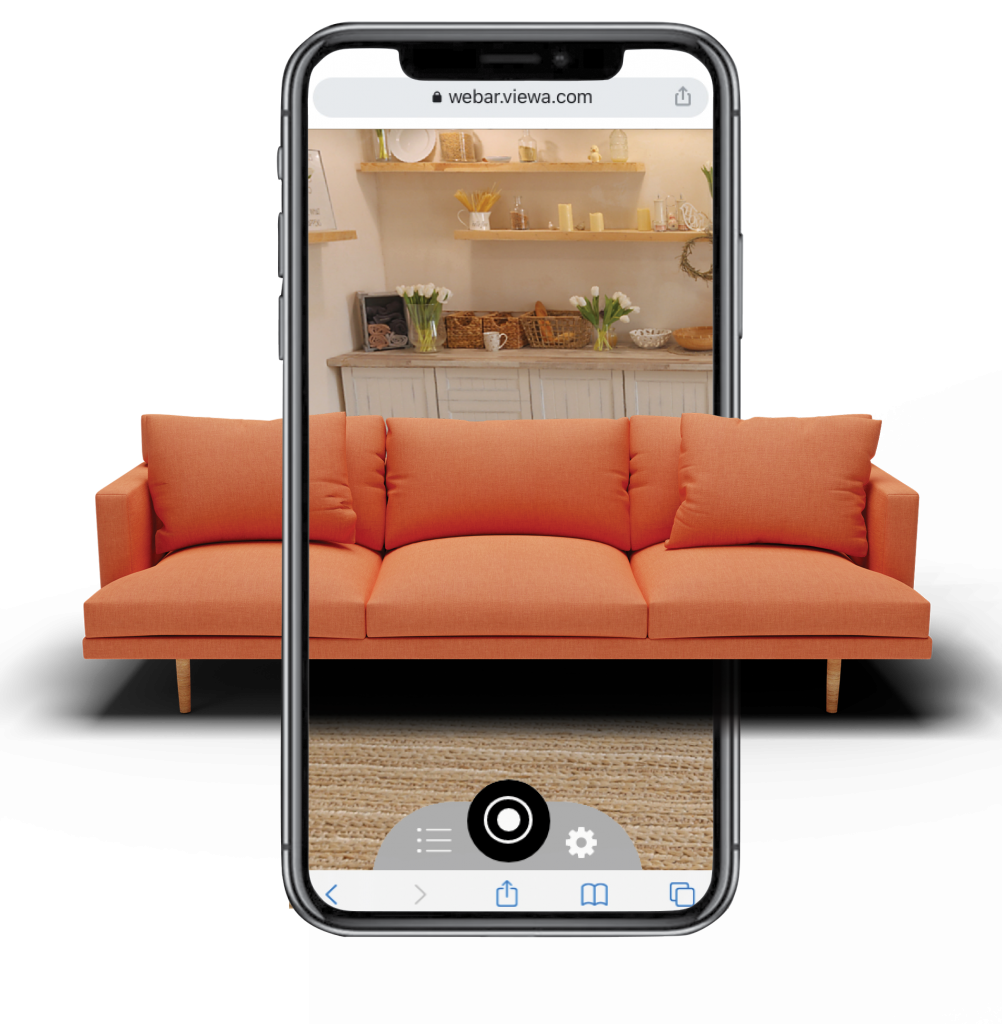Augmented Reality (AR) is once again one of the hottest buzzwords in the interiors industry. Traditional barriers to adoption have slowly been lifting with the advent of web-based AR (WebAR), which allows shoppers to easily use the technology and is enhancing engagement significantly. One silver lining of the pandemic is that it also led to the sudden uptake of technology that’s been available for years but under-utilised.
To find out more, we spoke to Ed Sedgley, Director and CEO of Viewa, a WebAR company that is working with established companies such as Warwick Fabrics to bring their products to life. Viewa will be exhibiting Decor + Design and the Australian International Furniture Fair (AIFF) this year, so be sure to visit them at Stand I4 to have a free demonstration of WebAR technology.
Q: Ed, AR has been a buzzword for several years now in the Australia furniture/furnishings industries. However, widespread adoption was slower before the pandemic. Why do you think that is?
Ed: You’re right – AR had a lot of early press through innovators such as the IKEA app however has remained reasonably stagnant since. This is partly due to the high costs and long time frames to deliver an effective AR experience combined with the fact it was typically app based which reduced adoption. Hence, these factors meant in the past it often didn’t stack up from a ROI perspective. However, this is changing now with web-based augmented reality.
Q: What is web-based AR?

Viewa’s WebAR showcasing Warwick Fabrics
Ed: Web based AR, or WebAR, is an emerging technology that allows users to share AR experiences via a web browser on a smartphone or tablet rather than requiring an app to be downloaded. Think of it like clicking on a website to launch AR rather than going to the app/play store and downloading an app.
Q. Why is this changing the market?
Ed: WebAR has a range of benefits over app-based AR. First and foremost, the user does not have to download an app. App fatigue is real and people understand that when you download an app, you are often giving away something e.g. data. In addition, for furniture, which is often a one-time purchase, customers don’t want to download an app that they will never use again. So WebAR moves past that adoption issue faced by traditional AR apps and is very seamless to use – typically launched from a button on a website or a QR code.
“At the same time, WebAR overcomes the issues of cost and speed. WebAR can be developed in such a way that a furniture client could have an AR experience set-up really quickly and at a much-reduced cost to traditional apps. Once you have increased adoption and reduced costs with quicker implementation, the ROI for AR becomes a lot more attractive.”

Warwick Fabrics
Q: ROI is important but, given AR is still in its infancy, do you see consumers using it?
Ed: Consumer behaviour has changed considerably since COVID-19 which heavily favours AR adoption. Add to this technology improvements and we have the perfect environment for AR to now become a crucial part of any online sales strategy. A few facts to support this:
- Online retail sales increased 32.4% YOY in 2020 and up 39% in Q1 2021
- 54% of ecommerce sales are now via mobile commerce
- 81% of shoppers research products before purchasing
- The cameras, speed and size of smart phones have improved dramatically.
AR enables smartphone users to properly research a product, place it at home to visualise it and then buy it with one click.
Q: Even if consumers use it, is it a gimmick or can it add real value?
Ed: Manufacturers and retailers now more than ever need to differentiate themselves online. The further they can take a potential customer down the buying cycle on their first interaction, the higher their conversion rates.
“Shopify, which has embraced AR in different forms, recently prepared a report showing that customer interactions with AR show a 94% higher conversion rate than those without it. That is compelling.”
In addition, AR allows an online customer to visualise a product at home prior to purchase which in turn leads to reduced returns which is another problem facing the industry with higher online sales. To put it simply, WebAR assists businesses to:
- sell more product online
- customers return less
- implement it quickly and cost effectively
When you combine current market factors with the clear business benefits – AR is about to launch!
How Warwick Fabrics is Augmenting Reality
At Decor + Design, we’re excited to see what the next year brings for AR. Decor + Design and AIFF Exhibitor Warwick Fabrics has engaged Viewa to drive online customer interaction and visualisation of their fabric and homewares range. An important component of this is Viewa’s virtual product placement tool – ConsidAR. Rachel Ferlazzo from Warwick Fabrics says that the ease of the product is key:
“Warwick Fabrics chose to proceed with ConsidAR due to its web-based framework. Allowing customers to easily place 3D models in our fabric ranges within their homes without needing to download an app. Making this experience as fast and streamlined as possible was an important part of our decision making.”
Rachel Ferlazzo, Warwick Fabrics
If you or your business would like to understand more about AR and/or have a free demonstration of WebAR technology, visit Viewa at Stand I4 at Decor + Design and the Australian International Furniture Fair (AIFF), 14 – 17 July in Melbourne! Entry to the exhibition is free – register now as a trade visitor and start planning your trip around the exhibition.
Alternatively visit http://www.viewa.com and register for a free consultation.


0 Comments
Leave A Comment